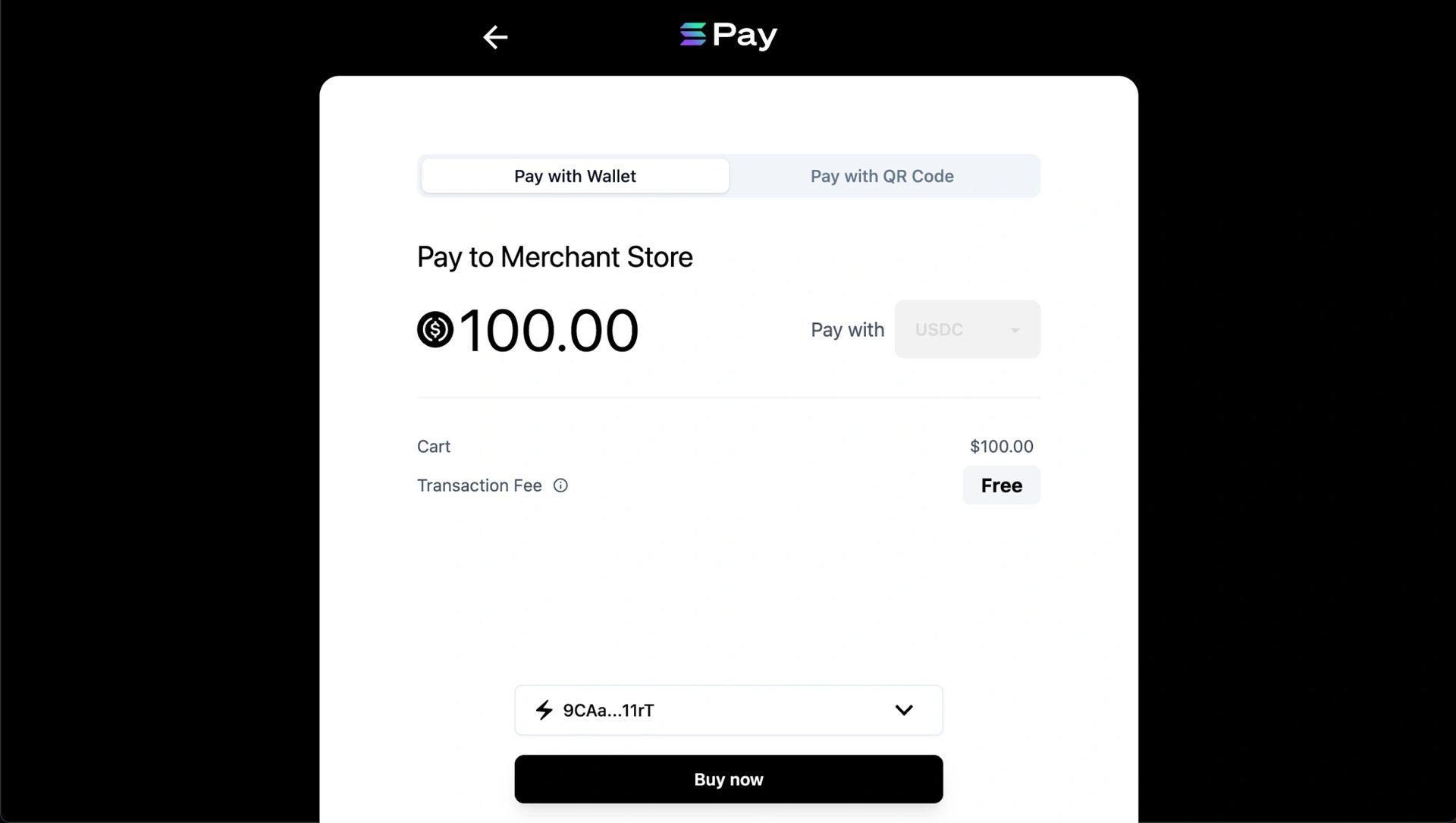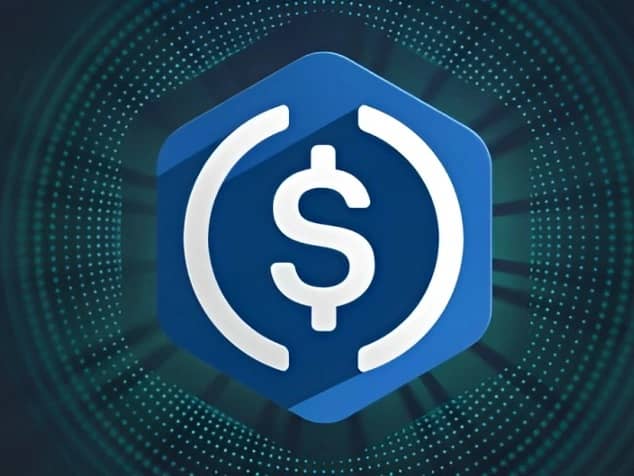订阅 wiki
Share wiki
Bookmark
USDC
USDC
USDC 是一个基于 以太坊 的 稳定币,由 Circle 发行 - Circle 是一家为互联网企业提供支付和资金管理基础设施的金融科技公司。它与美元的价值 1:1 挂钩,于 2018 年推出。[24]
2020 年 11 月,Circle 与 Airtm 和委内瑞拉玻利瓦尔共和国合作,将资金从美国财政部交付给委内瑞拉公民。这是美国历史上首次政府使用 稳定币 来执行外交政策计划。[5]
概述
由于 USDC 是一种与法定货币(即美元)挂钩的 ERC-20 代币,因此它不能像 比特币 或其他可挖矿的加密货币一样被挖掘。它由储备银行账户中持有的美元支持。基本上,USDC Treasury,即铸造 USDC 的 Centre 联盟,为每个 USDC 共同持有 1.00 美元。这些资金保存在一个特殊的银行账户中,该账户受到持续监控和审计。USDC 代币可以随时兑换回美元。[8]
USDC 可以在中心化和去中心化交易所购买和交易,例如 币安、Coinbase、Poloniex、OKX、Kucoin、Bitfinex 和 Uniswap。
代币化过程
将美元转换为 USDC 代币的过程称为代币化。这包括三个步骤:首先,用户将美元发送到代币发行人的银行账户;然后,发行人使用 USDC 智能合约生成等量的 USDC;最后,新创建的 USDC 被发送给用户,而等值的美元则作为储备金持有。[14]
将 USDC 兑换成美元是代币铸造的反向过程。步骤如下:首先,用户请求 USDC 发行人将等量的美元兑换成他们的 USDC 代币;然后,发行人向 USDC 智能合约提交请求,将代币兑换成美元,并从流通中移除等量的代币;最后,发行人从其储备金中将请求金额的美元返还到用户的银行账户,扣除任何适用的费用。用户收到相当于他们已兑换的 USDC 代币的净额。[14]
历史
USDC 由 Centre Consortium 开发,这是一个位于美国的开源、去中心化的消费者支付网络,与领先的加密货币交易所 Circle Internet Financial 和 Coinbase 合作。
USDC 是在 以太坊 上使用 智能合约 创建的 ERC-20 代币,任何人都可以通过区块链进行验证。Coinbase 于 2018 年 10 月 23 日宣布支持 USDC,并且它成为 Centre 联盟的第一个倡议。Circle 和 Coinbase 是该联盟的创始成员。USDC 于 2018 年 9 月 26 日推出,截至 2018 年 10 月,流通中的 USDC 约为 1.27 亿。到 2021 年底,流通中的 USDC 数量已增长到超过 510 亿。Circle 由 Jeremy Allaire 和 Sean Neville 于 2013 年创立。[7][9][10]
2020 年 4 月,Coinbase 将 110 万美元的 USDC 稳定币存入以太坊上两个最受欢迎的 DeFi 应用程序 Uniswap 和 PoolTogether 的资金池中。这项投资来自 USDC Bootstrap Fund,该基金于 2019 年 9 月启动。此前,DeFi 项目(如 去中心化交易所 (DEX),如 dYdX、DApps,如 Aave、流动性池,如 Uniswap 以及 Cobo Wallet 和 Dexwallet 等钱包)利用 USDC,导致 USDC 的市值大幅增长。[11]
2020 年 11 月 20 日,Circle 宣布与委内瑞拉玻利瓦尔共和国和 Airtm 建立合作伙伴关系。各方共同努力,使用 USDC 向委内瑞拉人提供援助,因为美国财政部此前在向委内瑞拉居民汇款方面存在问题,原因是独裁者尼古拉斯·马杜罗阻止了这项援助。该公司在一篇博客文章中表示:
通过与委内瑞拉玻利瓦尔共和国(由当选总统胡安·瓜伊多领导)、美国金融科技创新者 Airtm 的合作,以及与美国政府的协调和许可,我们能够建立一个援助支付管道,利用 USDC 的力量——以美元为后盾、开放的、基于互联网的数字货币支付——绕过马杜罗对国内金融系统的控制,并将数百万美元的资金投入到为委内瑞拉人民的健康和安全而战的人们手中。
来自美国财政部的资金通过 Airtm 在 Circle 开设的商业账户流动。从那里,USDC 被发送到移动数字钱包。Airtm 仅在委内瑞拉就有超过 50 万用户,这使得美国政府能够绕过委内瑞拉的银行系统,该系统由该国控制。
2020 年 12 月,Circle 宣布与 Visa 建立合作伙伴关系,允许其支付网络中的企业接受 USDC。2021 年 7 月,万事达卡宣布计划测试 USDC 作为一种支付方式,Stripe 在 2022 年 4 月表示,它将开始支持 USDC 作为一种支付形式。[10]
截至 2022 年 10 月,USDC 是最受欢迎的稳定币之一,并在 CoinMarketCap 上排名前 5 的 加密货币 之列。自 2018 年推出以来,USDC 进展顺利,并已树立了最值得信赖的稳定币的形象。[12]
使用案例
作为一种价格稳定的数字资产,USDC有以下几种使用案例:
- 对冲波动性: 投资于其他加密货币的投资者可以通过策略性地购买像USDC这样的稳定币来降低其投资组合的波动性。在市场剧烈波动期间持有USDC有助于稳定投资组合的价值。
- 以法定货币定价: 加密货币交易所上市的数字资产可以用像USDC这样的稳定币以法定货币定价。
- 稳定价格挂钩: USDC的价格稳定性使其能够代表股权所有权或基金投资。USDC也可以用来代表负债或债务。
- 汇款: USDC可用于跨境汇款。收款人可以存储USDC,而无需使用银行账户或担心价格波动。
- 美元敞口: 希望获得美元敞口的非美国投资者可以将USDC添加到他们的加密货币投资组合中。
- 对冲通货膨胀: 担心本国货币通货膨胀的非美国投资者可以持有像USDC这样的稳定币,以帮助保护其资金价值。
- 全球众筹: 初创公司和非营利组织可以通过征集数字货币从世界各地的投资者和捐助者那里筹集资金。以像USDC这样的稳定币的形式筹集资金可确保筹集到的资金价值不会随时间波动。
- 区块链互联: 使用USDC可以成为整合跨区块链的支付系统和应用程序的一种手段,因为它与许多自主区块链具有互操作性。[4]
透明度和监管
USDC是一个开源项目,在美国货币传输法律框架内运作,并使用信誉良好的银行和审计师。这是真正的财务和运营透明度。它由注册货币传输机构Circle支持,并作为货币服务业务受到美国财政部下属机构金融犯罪执法网络 (FinCEN) 的监管。[13]
除了美国之外,Circle还受到金融行为监管局的监管,作为一家电子货币机构,对负责英国金融体系的财政部和议会负责。因此,USDC的发行,等值的美元金额由Circle的信任伙伴之一确定。所有USDC代币都受到监管,透明且可在区块链上验证。[13]
安全性
USDC 由知名的会计和审计公司 Grant Thornton LLP 审计。该公司每月都会发布关于支持流通中的 USDC 代币的美元储备的证明。[13]
USDC x Cosmos
Circle正在与区块链验证公司Strangelove Labs合作,并在Informal Systems、Iqlusion和Osmosis Labs的支持下,开发一个由Cosmos保护的通用资产发行链,以发行其稳定币USDC。这将在2023年初在该网络上推出,开发者和用户都可以通过IBC协议访问该资产。[15]
“这真是一个挑战。我们提出了一个USDC链的架构——我们还没有完全讨论如何将其引入,但我们正在讨论让它成为链间安全的一部分的想法。” - Zaki Manian,Iqlusion联合创始人
Visa上的USDC支付
2021年3月,Visa透露将使用美元支持的稳定币USDC在以太坊网络上结算交易。[16][17]
“我们一直在测试如何实际接受发行方以USDC(基于以太坊)进行的结算付款,并以USDC(基于以太坊)进行支付” - Cuy Sheffield,Visa加密货币负责人
据Sheffield称,Visa目前正在探索使其客户能够直接在其平台上将其数字资产转换为法定货币的方法。[16][17]
“就像我们可以在跨境交易中在美元和欧元之间进行转换一样,我们应该能够在数字代币化美元和传统美元之间进行转换” - Sheffield
Circle掌控USDC
2023年8月21日,Coinbase宣布将投资Circle,并透露Circle将全面控制USDC的治理和运营。此举旨在简化运营,改善治理,并加强Circle作为发行方的责任。Coinbase还将收购Circle的股权。两家公司将继续从USDC储备利息收入中产生收入,并根据其平台上持有的USDC数量进行分成。此外,USDC计划在9月至10月期间在六个新的区块链上推出,包括Base、通过Noble网络连接的Cosmos、NEAR、Optimism、Polkadot和Polygon PoS,这将使USDC可在15个不同的链上使用。[18][19][21]
“新的结构将简化运营和治理,并加强Circle作为发行方的直接责任,包括持有所有智能合约密钥,遵守储备治理的法规,并在新的区块链上启用USDC。” - Jeremy Allaire
Solana Pay 使 USDC 支付能够通过 Shopify 进行
2023 年 8 月 23 日,Solana Labs 开发的去中心化支付协议 Solana Pay 宣布将其插件与 Shopify 集成。USDC 因其稳定性和合规性而被选为初始支付选项。
此次集成旨在为企业提供节省成本的优势,因为 Solana Pay 选项实际上是“免手续费”的,这与每笔交易通常 1.5% 到 3.5% 的信用卡处理费形成对比。
此外,此更新有助于商家以最小的开发工作量实施忠诚度计划。这些奖励系统可以包括 NFT 忠诚度代币,为使用 Solana Pay 的回头客提供折扣。 [20]

USDC 在 Optimism 上推出
2023 年 9 月 5 日,基于以太坊的 Layer 2 协议 Optimism 与 Circle 合作,将 USDC 引入 Optimism 生态系统。此举旨在通过增强流动性并提供一种完全储备且可以 1:1 兑换美元的稳定币来使双方受益。 Circle 的 USDC 集成还将提供机构出入金通道,扩大其作为机构投资者主要货币的作用。以太坊桥接版本的 USDC 在区块浏览器中将被重命名为 USDC.e,为集成做准备。 [22]
USDC 在 Base 上启动
2023年9月5日,USDC可以直接在 Base(一个以太坊 Layer 2 平台)上访问,无需桥接。Circle 账户和 Circle API 完全支持 Base USDC。
原生 USDC 由 Circle 发行,始终可以 1:1 兑换成美元。Base 正在努力将流动性从桥接 USDC (USDbC) 迁移到原生 USDC。这种集成有利于支付、交易、借贷,并允许用户在没有传统银行账户的情况下以数字美元进行储蓄。 [23]
Circle支付网络启动
2025年5月,Circle支付网络(CPN)上线。CPN是一个基于区块链的支付协调协议,允许银行和支付提供商安全地交换支付指令,并使用公共区块链上的USDC进行实时结算。[25]
CPN支持:B2B供应商付款、跨境汇款、资金管理和现金整合、周期性企业付款、工资单和大规模支付。[25]
"CPN的启动代表着数字支付新时代的到来。 在整个2025年,我们正在探索扩大对更多地区的访问,包括尼日利亚、欧盟、英国、哥伦比亚、印度、阿拉伯联合酋长国、中国、土耳其、菲律宾、越南和阿根廷。" - Circle在推特上表示 [25]
发现错误了吗?
